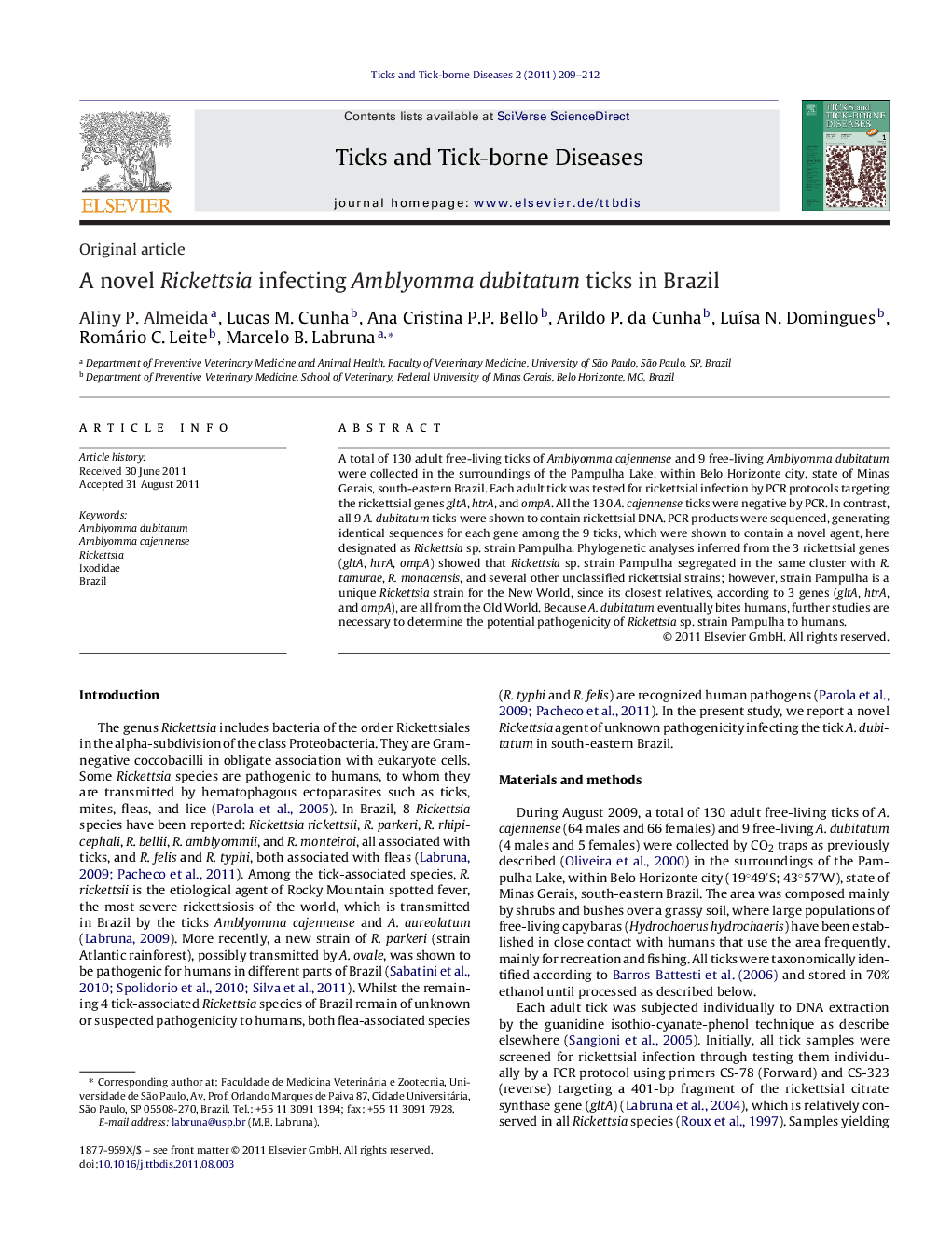| Article ID | Journal | Published Year | Pages | File Type |
|---|---|---|---|---|
| 2474294 | Ticks and Tick-borne Diseases | 2011 | 4 Pages |
A total of 130 adult free-living ticks of Amblyomma cajennense and 9 free-living Amblyomma dubitatum were collected in the surroundings of the Pampulha Lake, within Belo Horizonte city, state of Minas Gerais, south-eastern Brazil. Each adult tick was tested for rickettsial infection by PCR protocols targeting the rickettsial genes gltA, htrA, and ompA. All the 130 A. cajennense ticks were negative by PCR. In contrast, all 9 A. dubitatum ticks were shown to contain rickettsial DNA. PCR products were sequenced, generating identical sequences for each gene among the 9 ticks, which were shown to contain a novel agent, here designated as Rickettsia sp. strain Pampulha. Phylogenetic analyses inferred from the 3 rickettsial genes (gltA, htrA, ompA) showed that Rickettsia sp. strain Pampulha segregated in the same cluster with R. tamurae, R. monacensis, and several other unclassified rickettsial strains; however, strain Pampulha is a unique Rickettsia strain for the New World, since its closest relatives, according to 3 genes (gltA, htrA, and ompA), are all from the Old World. Because A. dubitatum eventually bites humans, further studies are necessary to determine the potential pathogenicity of Rickettsia sp. strain Pampulha to humans.
